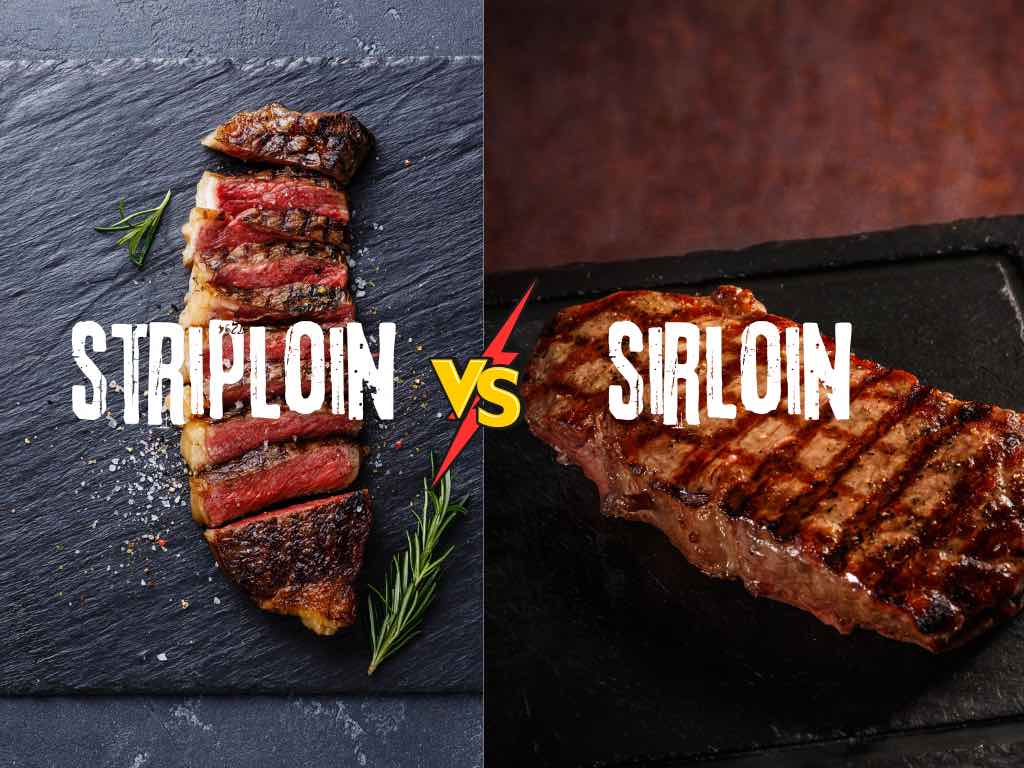
Beef Striploin vs Sirloin: A Comprehensive Steak Guide
|
|
Time to read 5 min
Welcome to One Stop Halal!
Written by: Samir P.
|
|
Time to read 5 min
When it comes to beef, the variety of cuts can be overwhelming. Two of the most commonly compared cuts are beef striploin and sirloin. Both are highly regarded, yet they differ in texture, flavor, and best uses in the kitchen. Whether you're grilling, pan-searing, or cooking a Sunday roast, knowing the distinctions between these cuts can elevate your culinary skills. In this blog, we will delve deep into the characteristics of beef striploin vs sirloin, discussing their origins, texture, flavor profiles, cooking methods, nutritional value, and more.
Knowing where the cuts come from on the cow is helpful for understanding the differences between NY strip vs sirloin.
This cut is taken from the short loin section of the cow, which is located just behind the rib area and before the sirloin. The short loin is a tender, less-used muscle, making it ideal for steaks. Striploin steaks are well-marbled, offering a balance of tenderness and flavor.
Sirloin comes from the rear back section of the cow, just before the round (hindquarters). Sirloin is divided into two main sections:
The location of these cuts on the cow is critical to their texture and flavor differences. Less used muscles, such as those in the short loin area, tend to be more tender than those supporting more movement, like the sirloin.
Knowing how to cook each cut is crucial to maximizing its flavor and texture.
When it comes to price, the striploin is generally more expensive than sirloin due to its tenderness and marbling. Here’s a general price range for these cuts (prices may vary depending on location and quality):
Striploin is versatile and works well for high-heat cooking methods such as grilling, broiling, or pan-searing. It’s a go-to choice for steak dinners, whether served as a whole steak or sliced into strips for salads or sandwiches.
Top sirloin is also versatile, though it doesn’t have quite the same luxurious mouthfeel as striploin. It’s excellent for grilling and pan-searing but can also be used for kebabs, stir-fries, or steak salads due to its slightly firmer texture.
Bottom sirloin is best reserved for slow-cooked dishes like pot roasts, stews, or ground beef. Its toughness makes it less ideal for quick, high-heat cooking methods.
The choice between striploin and sirloin ultimately depends on your preference for flavor, tenderness and how you plan to cook the meat.
Welcome to your favorite Butcher Shop. We carry various meat cuts that are hard to find elsewhere. We deliver to your doorstep anywhere in the United States within 1-2 business days.
Both striploin and sirloin have their strengths and are suited to different cooking methods and personal preferences. Striploin offers a richer, more indulgent experience with its marbling and tenderness, while sirloin provides a leaner, more affordable option with plenty of versatility. Whether cooking a juicy steak on the grill or preparing a slow-cooked roast, understanding these two cuts will help you choose the best one for your next meal.

© 2025 One Stop Halal, Inc.